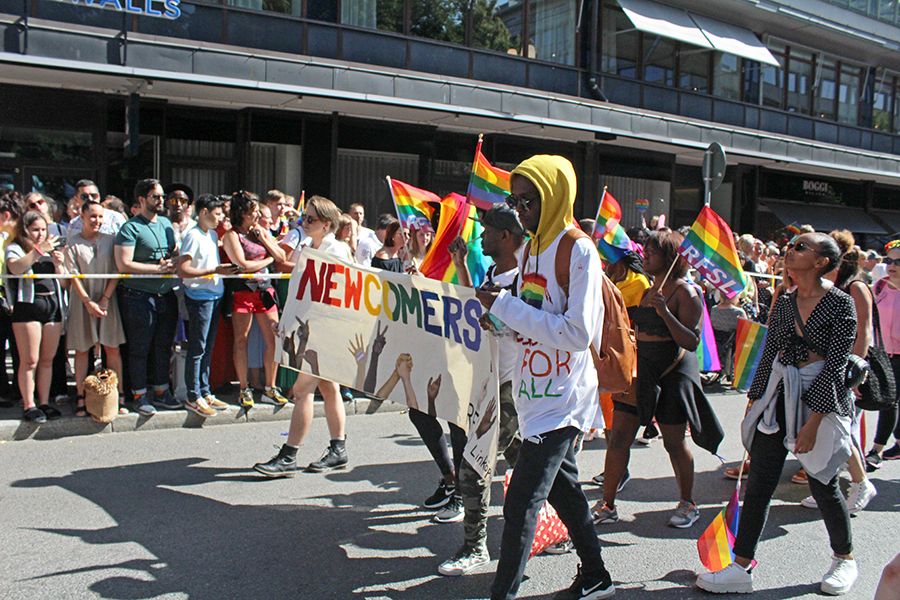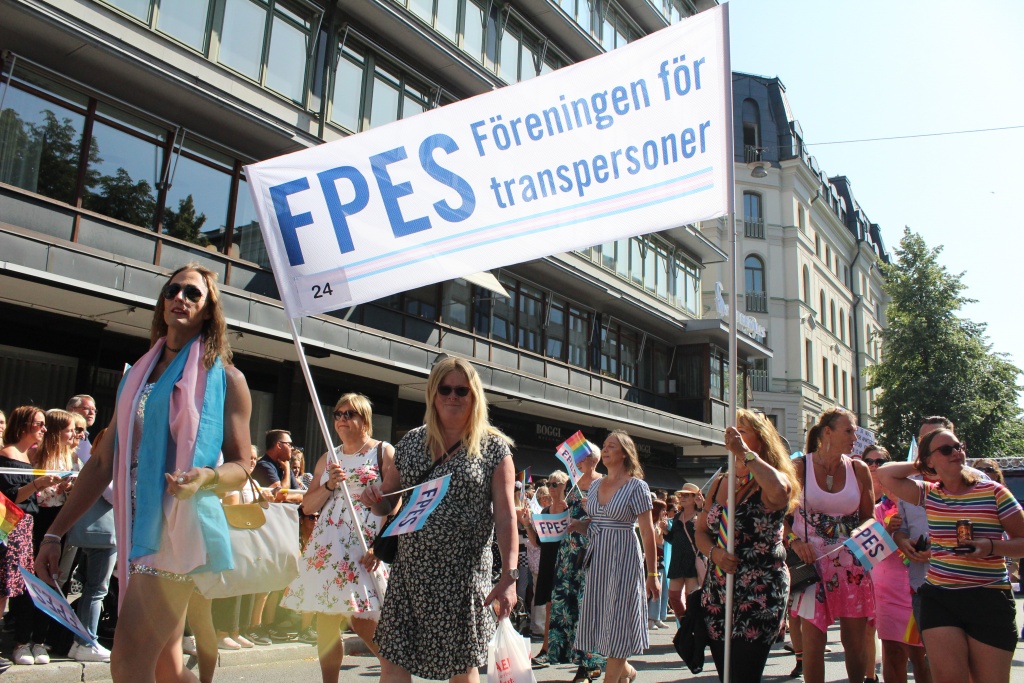Special assignment: PGN spent last week in Stockholm for Pride and to learn about LGBTQ issues in Sweden.
When, as a child, Swedish Parliament member Barbro Westerholm first saw two gay men holding hands, her father told her, “They love each other in the same way I love your mother; there is nothing special about that.”
His words rang in her ears years later, Westerholm said, when she worked as director general of the National Board of Health and Welfare of Sweden. Thirty LGBTQ activists occupied the office’s stairwell, calling for the organization to declassify homosexuality as a mental illness.
Westerholm’s staff suggested calling the police, but Westerholm decided to listen to the activists instead. On Sept. 27, 1979 — a month after the protest — the organization dropped homosexuality from its list of diseases.
“That has followed me up through these days, and I will continue to work with [the LGBT community] on these matters as long as I live,” said Westerholm, 86.
Forty years later, LGBTQ demonstrations look much different in Sweden. About 500,000 people from around the globe convened in the capital city Aug. 3 for Stockholm’s 21st-annual Pride Parade — the largest such event in Scandinavia and the rainbow gem of nearly a week of Pride celebrations.
Upwards of 50,000 marchers snaked their way through central Stockholm, beginning at City Hall and ending at Pride Park, in the sports ground Östermalm IP. Here, music artists including The Village People, Pussy Riot and Icona Pop performed throughout the week.
Parade participants waved signs with statements like, “No Pride for some of us without liberation for all of us,” “The one who flees has no choice, no human is illegal” and “It’s real, you’re real and you deserve to have a real, full, happy life.”
On top of commemorating 40 years since the declassification of homosexuality as a mental illness, this year’s Stockholm Pride marked a decade since same-sex marriage was legalized in Sweden, as well as the 50th anniversary of the internationally recognized Stonewall Riots.
Board members of the Stockholm Pride Association, the nonprofit that organizes the city’s Pride, said this year’s theme — “We are needed” — addresses a common question in Sweden: Do we still need Pride in 2019?
“We want to use this theme to raise all the questions, from specific laws that are missing or need to be evolved and also the social situation, which is quite different in Sweden depending on where you live, how old you are, if you’re through school or your workplace,” said Vix Herjeryd, president of the Stockholm Pride Association board.

Newcomers, a group for LGBTQ refugees and immigrants in Sweden, joins the Stockholm Pride Parade. Photo: Laura Smythe
Parade participation from Sweden’s highest-ranking elected officials and military officers, the Stockholm police force and various LGBTQ activists and organizations sets this Pride apart from other celebrations around the world, Herjeryd added.
Stockholm Pride also offers an International Solidarity Fund, which helps finance LGBTQ celebrations in other European cities, including Moscow; Zagreb, Croatia; Warsaw, Poland; and Riga, Latvia.
Several organizations representing Stockholm’s immigrants from countries like Mexico and Taiwan — the first country in Asia to legalize gay marriage — also joined the parade. One of the largest cohorts was Newcomers, an organization for LGBTQ refugees and immigrants living in the capital. In 2016, Sweden took in more than 160,000 refugees, mostly from war-torn countries like Syria and Iraq.
Moein, who didn’t want his last name published, is a gay man who moved to Stockholm recently from Iran — where being gay is punishable by death. Stockholm’s celebration was his first Pride, and he said he was happy to see many children in attendance.
“They can know that something like that exists and these are also humans,” added Moein, noting the celebration sets an example for more-conservative countries. “When we make them know something like that, then in the future everybody accepts all kinds of people, so it’s like a rainbow. It’s beautiful when it’s different, when you really see the variety.”
It was also the first Pride for Tyler Zammam, 17, a gay trans man from Syria. He said he hopes the event teaches people to accept differences in others.
“I never get to associate with people that are like me, so it’s like the first time, and I find it so fun,” he told PGN, adding, “You can be whoever you want at Pride; dress however you want.”
For Beatrice Svedlund, 26, from the Swedish city Gävle, it was her first Pride as an out lesbian. She attended with her girlfriend, Michaela Hasanovic, 31, of Stockholm.
“Even in Sweden, there are still a lot of places where people don’t come out,” Svedlund said. “So I think it’s very important that we can be role models both to our country and to other countries.”
Hasanovic said she hopes Stockholm Pride can normalize the LGBTQ community for others.
“I hope that [spectators] will learn that everybody is equal, that being gay is not wrong and that there is a lot of love here,” she added.

Swedish musician Alex Falk performs at Pride Park following the parade. Photo: Laura Smythe
Swedish LGBTQ rights activists are now focused on lifting the country’s ban on surrogacy, as well as finding research on the results of gender-affirming surgeries in other nations to develop supportive procedure guidelines procedures for young trans people, Westerholm said.
The goal of Stockholm Pride is to have everyone better understand the “We are needed” theme while working toward accomplishing such feats, Herjeryd said.
“I hope that people take away this year’s theme — that we are needed to continue this work — and that you have met a lot of people, you got a bigger network and that you are filled with energy to continue the work for the rest of the year,” they said.
